During its long mission to Saturn, the Cassini spacecraft has given us image after spectacular image of Saturn, its rings, and Saturn’s moons. The images of Saturn’s moon Enceladus are of particular interest when it comes to the search for life.
At first glance, Enceladus appears similar to other icy moons in our Solar System. But Cassini has shown us that Enceladus could be a cradle for extra-terrestrial life.
Our search for life in the Solar System is centred on the presence of liquid water. Maybe we don’t know for sure if liquid H2O is required for life. But the Solar System is huge, and the effort required to explore it is immense. So starting our search for life with the search for liquid water is wise. And in the search for liquid water, Enceladus is a tantalizing target.
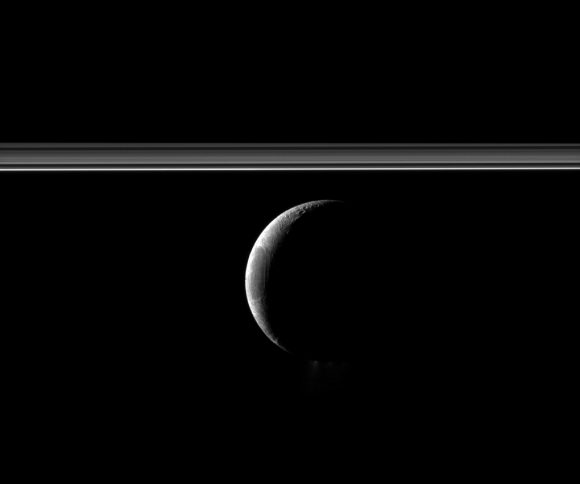
Though Enceladus looks every bit like a frozen, lifeless world on its surface, it’s what lies beneath its frigid crust that is exciting. Enceladus appears to have a subsurface ocean, at least in it’s south polar region. And that ocean may be up to 10 km. deep.
Before we dive into that, (sorry), here are a few basic facts about Enceladus:
- Enceladus is Saturn’s sixth largest moon
- Enceladus is about 500 km in diameter (Earth’s Moon is 3,474 km in diameter)
- Enceladus was discovered in 1789 by William Herschel
- Enceladus is one of the most reflective objects in our Solar System, due to its icy surface
In 2005, Cassini first spied plumes of frozen water vapor erupting from the southern polar region. Called cryovolcanoes, subsequent study of them determined that they are the likely source of Saturn’s E Ring. The existence of these plumes led scientists to suspect that their source was a sub-surface ocean under Enceladus’ ice crust.
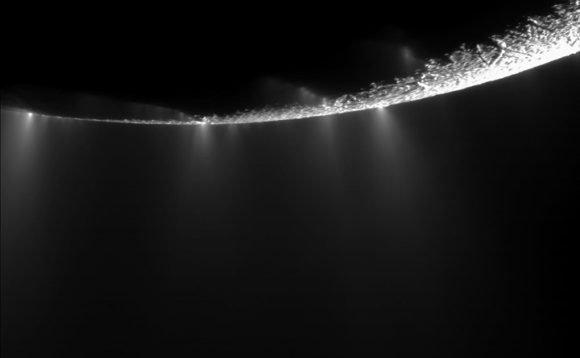
Finding plumes of water erupting from a moon is one thing, but it’s not just water. It’s salt water. Further study showed that the plumes also contained simple organic compounds. This advanced the idea that Enceladus could harbor life.
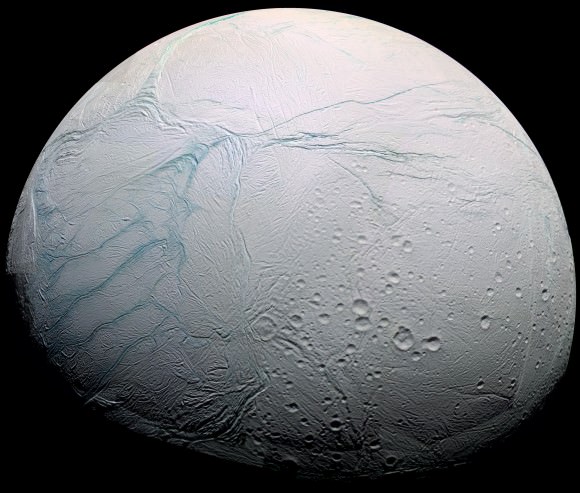
The geysers aren’t the only evidence for a sub-surface ocean on Enceladus. The southern polar region has a smooth surface, unlike the rest of the moon which is marked with craters. Something must have smoothed that surface, since it is next to impossible that the south polar region would be free from impact craters.
In 2005, Cassini detected a warm region in the south, much warmer than could be caused by solar radiation. The only conclusion is that Enceladus has a source of internal heating. That internal heat would create enough geologic activity to erase impact craters.
So now, two conditions for the existence of life have been met: liquid water, and heat.
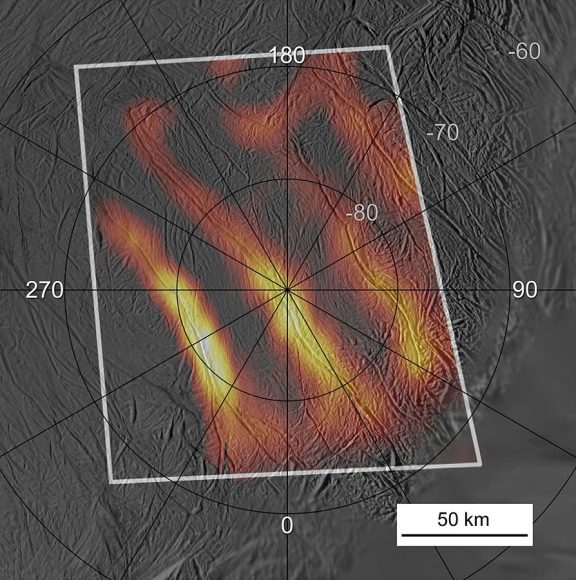
The source of the heat on Enceladus was the next question facing scientists. That question is far from settled, and there could be several sources of heat operating together. Among all the possible sources for the heat, two are most intriguing when it comes to the search for life: tidal heating, and radioactive heating.
Tidal heating is a result of rotational and orbital forces. In Enceladus’ case, these forces cause friction which is dissipated as heat. This heat keeps the sub-surface ocean in liquid form, but doesn’t prevent the surface from freezing solid.
Radioactive heating is caused by the decay of radioactive isotopes. If Enceladus started out as a rocky body, and if it contained enough short-lived isotopes, then an enormous amount of heat would be produced for several million years. That action would create a rocky core surrounded by ice.
Then, if enough long-lived radioactive isotopes were present, they would continue producing heat for a much longer period of time. However, radioactive heating isn’t enough on its own. There would have to be tidal heating also.
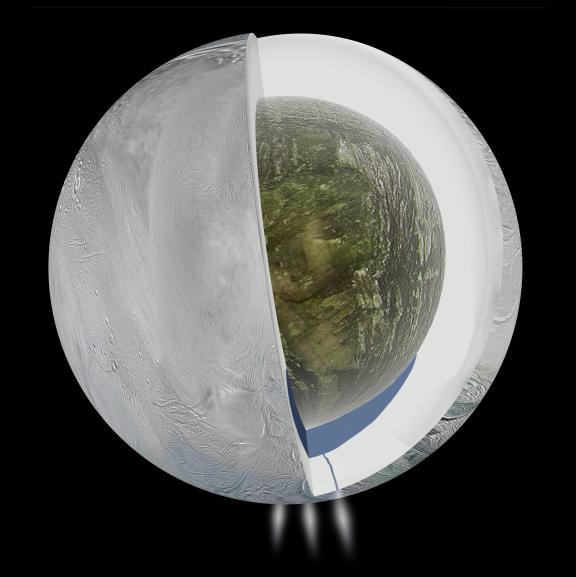
Image Credit:
NASA/JPL-Caltech
More evidence for a large, sub-surface ocean came in 2014. Cassini and the Deep Space Network provided gravitometric measurements showing that the ocean is there. Those measurements showed that there is likely a regional, if not global, ocean some 10 km thick. Measurements also showed that the ocean is under an ice layer 30 to 40 km thick.
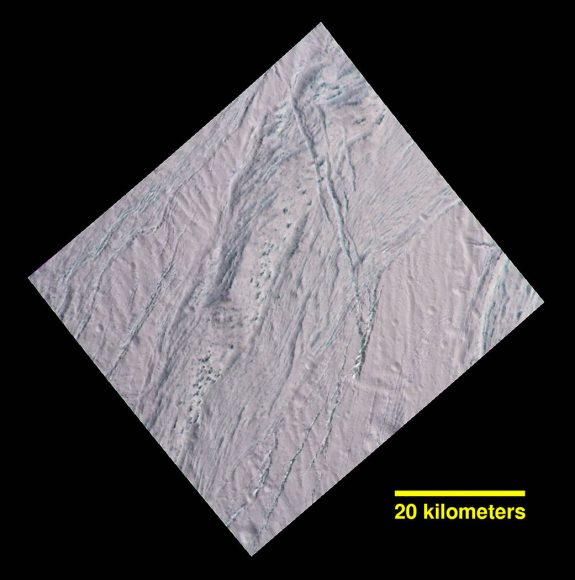
The discovery of a warm, salty ocean containing organic molecules is very intriguing, and has expanded our idea of what the habitable zone might be in our Solar System, and in others. Enceladus is much too distant from the Sun to rely on solar energy to sustain life. If moons can provide their own heat through tidal heating or radioactive heating, then the habitable zone in any solar system wouldn’t be determined by proximity to the star or stars at the centre.
Cassini’s mission is nearing its end, and it won’t fly by Enceladus again. It’s told us all it can about Enceladus. It’s up to future missions to expand our understanding of Enceladus.
Numerous missions have been talked about, including two that suggest flying through the plumes and sampling them. One proposal has a sample of the plumes being returned to Earth for study. Landing on Enceladus and somehow drilling through the ice remains a far-off idea better left to science fiction, at least for now.
Whether or not Enceladus can or does harbor life is a question that won’t be answered for a long time. In fact, not all scientists agree that there is a liquid ocean there at all. But whether it does or doesn’t harbor life, Cassini has allowed us to enjoy the tantalizing beauty of that distant object.
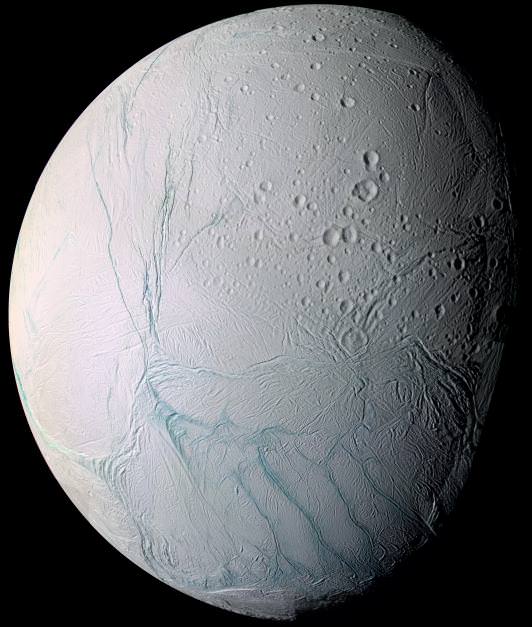

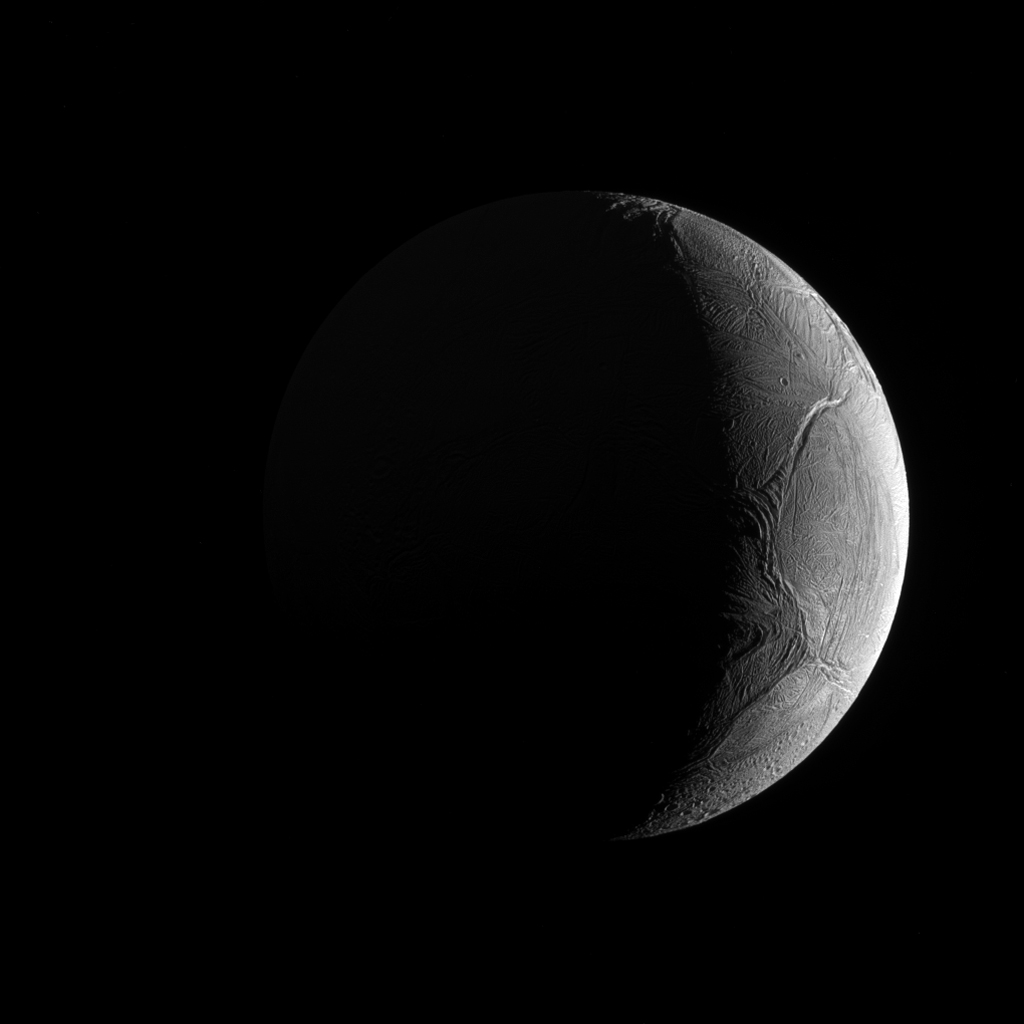
Imagine the tides in an interior or ice encrusted ocean… hmm..
Given the proximity to Saturn.. tidal bores reflected thru the ice?